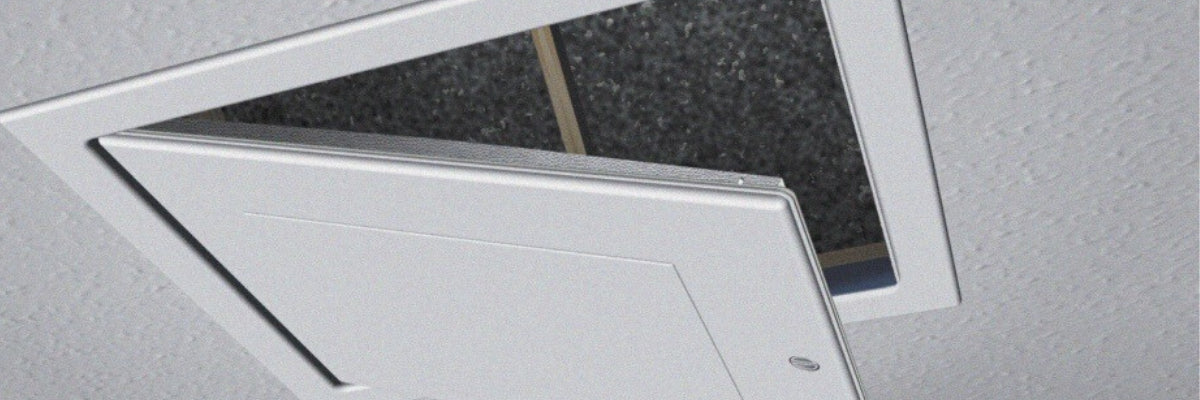The increased levels of thermal insulation found within the roof voids of a modern house is intended to reduce the amount of heat that is lost from the warm living spaces of the property over time. However breaks in this insulation layer, such as through the loft hatch, will severely compromise its effectiveness.
Losing heat, losing money ...
A poor quality draught seal around a loft hatch or the lack of one entirely will lead to there being open gaps between the living area and the cold loft space. It is through these gaps that the air, which the homeowner has paid to heat up, can escape and lead to an increase in the cost of heating bills.
The heat will also radiate out of a property, typically upward as the heat rises, loft insulation will reduce the amount of this heat which can escape. Areas with low amounts of insulation, such as the back of loft hatches, will allow more heat to escape than the surrounding area. This problem can be avoided by insulating the back of the loft door to the required level.
The diagram below illustrates the typical air leakage and heat loss issues through a poorly sealed and inadequately insulated loft hatch.
Air leakage
Manthorpe’s GL250 loft access hatch meets the requirement of both BS 9250:2007¹ and BS 5250:2011² for the air leakage rate through a loft hatch and frame. The requirement when tested to BS EN 13141-1:2004 is less than 1m³/h at a pressure difference of 2Pa. In addition, the doors have also been tested to meet the requirements of the Building Regulations Part L1A³ for the reasonable limit for the design air permeability of the building fabric, set at 10m³/(h/m²) at 50Pa. The doors were independently tested at the BRE, report numbers 283506 and 233677.
Insulation
All of Manthorpe’s loft access doors offer a variety of insulation options to meet various thermal values through the door. Ranging from a basic level of insulation, doors are available with a U-Value of 0.35W/m²K to meet the requirements of the Robust Construction Details along with insulated options down to 0.15W/m²K for those considering the higher levels of the Code for Sustainable Homes. Contact us for information about the full range available.
Environment
The insulation materials used in the manufacture of all Manthorpe loft access doors are CFC/HCFC-free with an Ozone Depletion Potential (ODP) of 0 and have a Global Warming Potential (GWP) of less than 5.
Looking for an insulated loft hatch & ladder?
If you are actually looking at replacing both your loft hatch and loft ladder with a fully insulated alternative, then the TB Davies Luxfold Loft Ladder is arguably the most energy-efficient ladder system available.

